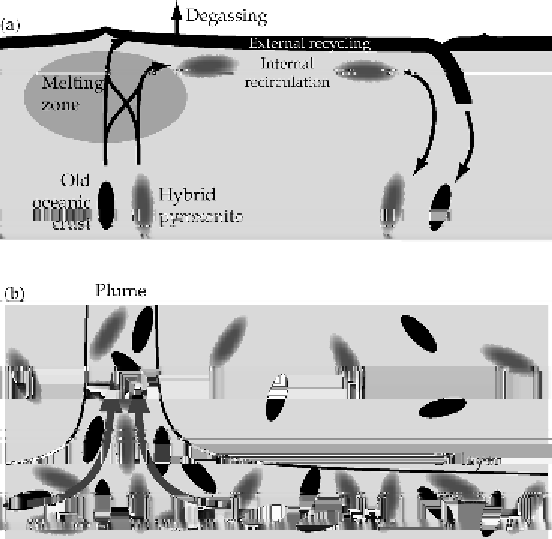Geology Reference
In-Depth Information
Figure 10.24. (a) Sketch of how hybrid pyroxenites may partially recirculate inter-
nally, while some is erupted to contribute to the externally recycling oceanic crust.
Noble gases, carried mainly in the pyroxenites, would thus be only partially
degassed at mid-ocean ridges. (b) Sketch of how both old oceanic crust and hybrid
pyroxenite may accumulate in greater concentrations in the D
zone. From Davies
[227]. Copyright American Geophysical Union.
within the mantle, and so will not lose its noble gases (Figure 10.24(a)). Some of
the gases initially present in the hybrid pyroxenite will thus be lost, but not all. The
next generation of hybrid pyroxenite would still be the main site in which noble
gases are stored in the mantle, even though it would have a lower concentration of
noble gases.
So far this just describes one way in which the noble gases initially in the mantle
are stored and gradually lost over the age of the Earth, although it does mean that
previous estimates of their present concentrations may be inaccurate, as we will
see. The real puzzle has been why some OIBs, coming from sources that show
obvious signs of having been previously processed, have less radiogenic noble
gases than MORBs.
Pyroxenites, being closer in composition to eclogites than are peridotites, have
similar mineral phases as eclogites, though in different proportions. They are
therefore likely to be denser than average mantle through most of the mantle

